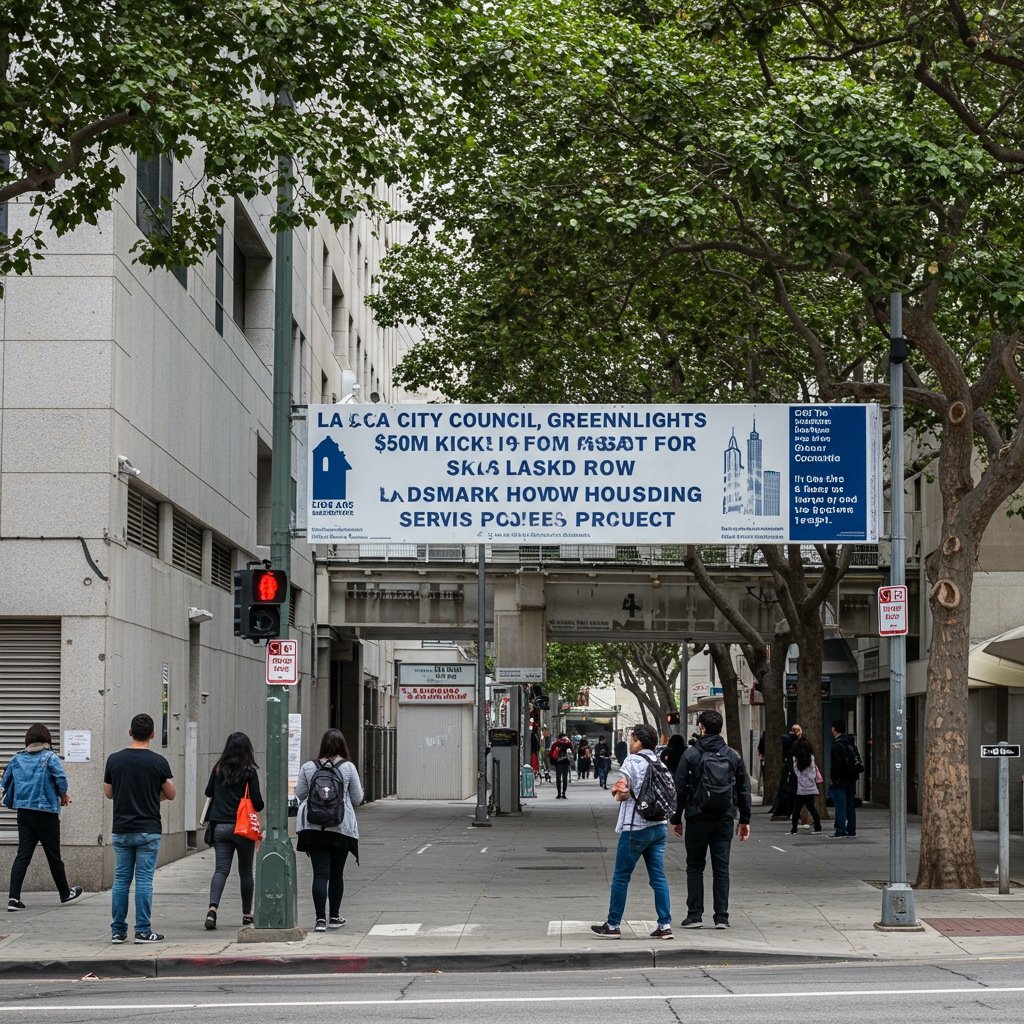Los Angeles Takes Major Step on Skid Row Redevelopment with Initial $50M Investment
Los Angeles, CA – The Los Angeles City Council on Thursday took a significant and long-awaited step toward revitalizing a critical area within Skid Row, unanimously approving an initial funding allocation of $50 million for a transformative redevelopment project. The decisive 15-0 vote marks a pivotal moment for the Skid Row Redevelopment Project, specifically targeting the 500 and 600 blocks of South San Pedro Street.
The $50 million secured through this vote is strategically earmarked for essential preliminary phases of the project, primarily focusing on the acquisition of properties necessary to pave the way for future development. Crucially, these funds will also support the initial stages of designing and developing permanent supportive housing units and integrated social services centers within the designated blocks.
This ambitious undertaking is designed to directly address the pressing humanitarian crisis of homelessness in one of Los Angeles’s most challenged neighborhoods. By coupling permanent housing solutions with comprehensive social services, the project aims to provide not just shelter, but also the necessary support systems – including healthcare, mental health services, job training, and case management – essential for individuals to transition out of homelessness permanently and stabilize their lives.
Efforts leading up to this crucial funding approval have been spearheaded by the office of Councilmember Nithya Raman, working in close collaboration with key partners, including the Los Angeles Homeless Services Authority (LAHSA). This collaboration underscores a multi-faceted approach involving city governance and regional homelessness service provision to tackle the complex issues prevalent in Skid Row.
The Skid Row Redevelopment Project aligns with the city’s broader, urgent goal of significantly reducing homelessness in Downtown LA. While challenges remain immense, this $50 million initial investment signals a robust commitment from the City Council to dedicate substantial resources towards creating tangible, built solutions.
Project Scope and Vision
The concentration of the project’s initial phase on the 500 and 600 blocks of South San Pedro Street is strategic. This area is central to Skid Row and has long been identified as needing significant intervention. The vision extends beyond simply building structures; it is about creating a nexus of care and stability in a neighborhood historically defined by extreme poverty and lack of resources.
The development of permanent supportive housing units is a cornerstone of the project. This model has proven effective in providing stable residency for individuals experiencing chronic homelessness, particularly those with complex physical or mental health needs. Stability in housing is often the first critical step towards accessing and benefiting from other supportive services.
Hand-in-hand with housing, the development of integrated social services centers is paramount. These centers are envisioned as hubs where residents and potentially other unhoused individuals in the vicinity can access a range of critical services under one roof. This integrated approach reduces barriers to access, making it easier for people to get the holistic care they need without navigating multiple, disparate locations.
The Significance of the Unanimous Vote
The unanimous 15-0 vote by the Los Angeles City Council is particularly noteworthy. It demonstrates a rare moment of full consensus on a project addressing one of the city’s most contentious and complex issues. This united front signals strong political will and a shared understanding among council members regarding the urgent need for impactful intervention in Skid Row. Such unanimous support can be crucial for the project’s momentum, stability, and ability to secure future funding phases.
Councilmember Raman’s office has been a key driver in bringing this project to fruition, navigating complex land-use issues, community concerns, and funding mechanisms. The partnership with LAHSA ensures that the project’s design and implementation will be informed by the expertise of the region’s lead agency on homelessness, ensuring that services are appropriately tailored to the needs of the unhoused population.
Looking Ahead: Timeline and Impact
While this $50 million represents the initial funding phase, it is a foundational amount that unlocks the ability to move forward with property acquisition – a critical and often time-consuming step in urban development projects. With this funding secured, the project can advance from planning stages towards physical realization.
The project team and city officials anticipate that the groundbreaking for the Skid Row Redevelopment Project could occur by early 2026. This timeline suggests that while the initial funding is approved, the full scope of development will unfold over the next several years, requiring further planning, design, permitting, and additional financial investment.
The successful execution of this project on the 500 and 600 blocks of South San Pedro Street is expected to serve as a model for future, similar developments in Skid Row and across the city. It represents a shift towards a more comprehensive, housing-first-oriented strategy coupled with robust supportive services as a long-term solution to chronic homelessness.
This initial $50 million allocation is more than just a budget line item; it is an investment in the future of Downtown LA and, more importantly, in the lives of the unhoused individuals who call Skid Row home. The project faces significant hurdles still, including community engagement, further funding needs, and construction challenges, but the unanimous vote provides a strong mandate to proceed with this critical work.





